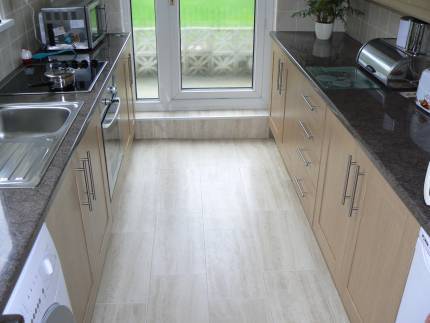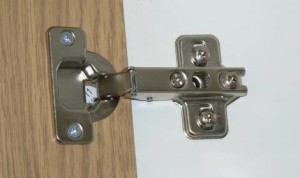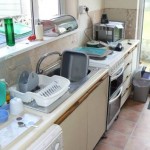The electrical wire board is the hub that controls all the wiring in your property with each circuit convey electrical present in your building heading again to this one single spot. Numerous properties are even now working on circuit sheets and electrical wiring that were introduced in the 1960s. These maturing establishments are practical, yet miss the mark concerning cutting edge wellbeing principles. In the event that your wires continue breaking it may be the case that this is the ideal opportunity to contemplate changing your old breaker board for a current one that offers better insurance.
electrical experts westend glasgow are a group of expert and qualified circuit repairmen working all over west end glasgow, along these lines, in the event that you are searching for a circuit tester in west end Glasgow, Lambeth or Croydon for instance, then we are splendidly set to offer assistance. Notwithstanding breaker board changes, our administrations spread anything electrical from essentially including an additional attachment, to a full-scale rewire. Each occupation we do attempts to make the electrical hardware in your property more secure, and takes after the strict rules set around the Bs7671 Wiring Regulations (seventeenth Amendment 1, 2011). Changing your circuit board is a noteworthy step towards getting electrical security your home closer to gathering these norms.
Current breaker sheets are fitted with Rcds, or Residual Current Devices, and Mcbs, or Micro Circuit Breakers. These productive gadgets are intended to catch blames in your circuits, and cut the present in a moment ought to anything uncommon be recognized. Fundamentally lessening the danger of electric stun and the flashes or overheating that can result in electrical blazes, these current circuit breakers offer incredible genuine feelings of serenity.
Otherwise called a fuse box or a consumer unit, power box unit or electrical board, the wire board in your property needs to be furnished to adapt to the requests of advanced family machines. Taken together, things like coolers, electric pots, clothes washers and dishwashers are significantly more eager for power than anything that was around when the old circuit sheets were initially introduced. Your new breaker board will be fitted with sufficient breakers to adapt to these raised force requests inside your property, with each one circuit being ensured more viably than at any time in the past.
Wire board changing is a generally direct assignment that can for the most part be carried out inside a couple of hours relying upon the amount of circuits in your property, and the unpredictability of the wiring as of now set up. The change can just lawfully be effected by a qualified electrical expert who is Part P enrolled. It is vital when changing a breaker board to guarantee that the earth-holding game plans in your property meet current benchmarks, and are overhauled if needed. The circuit board trade expense will fluctuate as stated by your prerequisites, yet is not as exorbitant as you may envision, and its a little cost to pay for your security. fuse board replacement
electricians westend glasgow
we have been giving electrical administrations to provincial and business customers in South London in excess of 20 years. Clients searching for an Emergency Electrician in partick, a circuit prepare to leave change in Bromley, or another plug attachment in glasgow realize that captivating the administrations of our group of masters will convey quick, productive and expert comes about, without a doubt.
It took just 10 minutes for Kevin Arthur to be persuaded that the tiny square of red glass on his fingertips was the future of solar power.
He had only recently been involved in a solar energy start-up company and was keen to try his hand at something new.
We would still be in the lab if it wasn't for the Technology Strategy Board – they listened to us when nobody else would – and their faith in our technology is seeing fruition right now – we are world leaders in our field - Kevin Arthur, CEO of Oxford Photovoltaics
But that was before he met the charismatic Oxford Universityphysicist Dr Henry Snaith and saw his remarkable solar cells.
‘I went into the room a sceptic and came out a believer,' says Kevin, the Chief Executive Officer of Oxford Photovoltaics.
We have been on the most amazing journey with them [Technology Strategy Board] - Kevin Arthur
Four years later – with a range of Technology Strategy Board fundings under their belt the two of them were heading up one of the UK's most promising young green electrical companies.
The incredible journey

‘We would still be in the lab if it wasn't for the Technology Strategy Board – they listened to us when nobody else would – and their faith in our technology is seeing fruition right now – we are world leaders in our field,' added Kevin.
‘We have been on the most amazing journey with them. In the beginning – on that day in that room just four years ago – Henry showed me a solar cell technology that was low-cost, easy to produce and which could be printed on the surface of glass.
‘The idea gripped me straight away. You mixed up the stuff and printed it on glass. That meant it could be used in the glass skins of commercial buildings - a massive market. I was really excited by the opportunity!'
Unlike conventional silicon solar panels which use rare earth metals and toxic materials, Henry's photovoltaic cells, developed at the Photovoltaic and Optoelectronic Device Group in Oxford University's Physics Department, use cheap, abundant and environmentally friendly materials - Kevin Arthur
By November 2009, Kevin already had more than 20 years' experience in the semi-conductor industry and two promising university spin-outs under his belt. He wanted a new challenge.

‘I was entrepreneur in residence at Imperial College when I was phoned by Isis Innovation – Oxford University's technology transfer arm - who asked if I wanted to be chief executive officer of another solar start up.
‘I'd already done solar with a university spin-out called QuantaSol so I told them ‘no thanks,' but by the end of that meeting with Henry I had changed my mind,' explained Kevin.
Low cost solutions for the environment
‘Unlike conventional silicon solar panels which use rare earth metals and toxic materials, Henry's photovoltaic cells, developed at the Photovoltaic and Optoelectronic Device Group in Oxford University's Physics Department, use cheap, abundant and environmentally friendly materials.
‘The technology works by printing a microscopic layer of ‘solid-state dye sensitised solar cells' on ordinary glass. The cells are sealed with a thin layer of glass.
‘A layer of cells is just one or two thousandths of a millimetre thick (one or two microns) and can be made in a range of colours and transparencies,' said Kevin.
‘In contrast, the equivalent traditional product – amorphous silicon solar cells often found in calculators – are black or brown and the process of making them transparent severely reduces their already low efficiency.

‘These new solar cells are more efficient, more stable, thinner and use lower cost materials,' says Kevin. ‘They make beautifully clear coloured glass,' he added.
‘They work at much higher temperatures than existing technology which tends to lose efficiency above 25ºC. They also work well with diffuse light – making them suitable for building facades.
Harnessing the power of the sun
‘In 2009, the cells were working at five per cent efficiency, which meant it was converting five per cent of sunlight into electricity.
‘That isn't enough for a commercial product which typically works at 15 to 20 per cent efficiency but it was more than enough to show me that the invention had potential. I was hooked,' said Kevin.
All we could think was ‘Amazing! In one step, the Technology Strategy Board has got our company up and running! We could hardly believe it was true! - Kevin Arthur
He spent 11 months working on a business plan to allow Oxford Photovoltaics to licence the technology to glass manufacturers and processors. But money was hard to find and the company needed cash before Isis would release the patents.
Then in September 2010, Kevin learnt about Innovate 10 Launch Pad – a business competition run by the Technology Strategy Board for ‘disruptive' inventions and business ideas.
The prize was £25k and the chance to pitch for an additional £75k in front of 2,000 people at the Design Centre, Glasgow.
There was one catch. Kevin discovered this potential funding source late in the day and the deadline for submitting his video entry was noon the next day.

‘To make it worse I had a board meeting at 10am. The whole thing is a bit of a blur now. But on that fateful day, I got up at 4.30am, found my video camera, got a tripod from the loft and wrote a two minute script which I stuck to the back of the office door at home.
‘Time was ticking, I was on my own and I'd never edited a video before. But I did it and it's still on YouTube. It looks pretty reasonable.
‘We got the initial £25k prize in the Energy category and then we had this chance to increase it to £100k at the event itself where we did a short presentation. We beat three other guys and suddenly we had the money to build the company.
One step to success with the Technology Strategy Board
If we hadn't got the £100k from the Technology Strategy Board we wouldn't have been able to licence the patents and we wouldn't be here now. But we did. They did - Kevin Arthur
‘All we could think was ‘Amazing! In one step The Technology Strategy Board has got our company up and running! We could hardly believe it was true!
‘If we hadn't got the £100k from the Technology Strategy Board we wouldn't have been able to licence the patents and we wouldn't be here now. But we did. They did.
‘The next day we hit the road and we started pitching to anybody who would listen,' said Kevin.
Once again, the Technology Strategy Board helped us realise our dreams, this time with a £250k grant under the Smart scheme - Kevin Arthur
The company took control of the patents, landed £700k from the clean technology investment specialists MTI Ventures and a syndicate of Angel investors and moved to Begbroke Science Park near Oxford in April 2011.
Now they faced a new challenge - to go from creating small prototypes to A4 panes of solar power glazing.
That £250k was extremely important because it extended the range of the funding we brought in, and kept us focused on tight timescales and milestones. It gave us more runway - Kevin Arthur
To do that they needed to build the company's research and development capacity. ‘Once again, the Technology Strategy Board helped us realise our dreams, this time with a £250k grant under the Smart scheme.
‘That £250k was extremely important because it extended the range of the funding we brought in, and kept us focused on tight timescales and milestones. It gave us more runway,' explained Kevin.
It is yet another British company that is at the forefront of technologies that just a few years ago we would have thought impossible -Kevin Arthur
Since then the investment has kept coming. By July 2013, Oxford PV and its 14 employers had secured £4.2m in funding, including an award from the European Commission Seventh Framework Programme for Research.
By summer 2013, an improved version of the cell achieved more than 15 per cent efficiency, a level similar to commercial products.
‘The technology at our fingertips to change the world'
It's taken less than four years for Oxford PV to go from the lab to one of the UK's most promising green companies, and we did it with the Technology Strategy Board behind us who not only helped us financially but gave us the credibility for other, future investments - Kevin Arthur
The first revenues are expected by 2016 while the first office blocks that generate electricity from their windows could follow a few years after that. ‘Imagine that. And it is yet another British company that is at the forefront of technologies that just a few years ago we would have thought impossible,' said Kevin.
‘We think the added cost of doing this is 10 per cent on top of the cost of the glass. But this technology pays for itself in less than 10 years,' he added.

‘It's taken less than four years for Oxford PV to go from the lab to one of the UK's most promising green companies, and we did it with the Technology Strategy Board behind us who not only helped us financially but gave us the credibility for other, future investments."
‘Henry believes that we have the technology at our fingertips to change the world – and we're determined to prove that he's right.'
 occurring your quarters by fitting a appendage
occurring your quarters by fitting a appendage 





 Remove all the doors, drawers and shelves first, then remove any screws that are fixing the worktop(s) to the base units. If the worktop edges are under tiles you may have to remove some, if not all of them to ‘free up’ the worktop. Some old kitchens have the worktop glued to the base units so the only removal solution may be a lump hammer and crowbar.
Remove all the doors, drawers and shelves first, then remove any screws that are fixing the worktop(s) to the base units. If the worktop edges are under tiles you may have to remove some, if not all of them to ‘free up’ the worktop. Some old kitchens have the worktop glued to the base units so the only removal solution may be a lump hammer and crowbar.

















